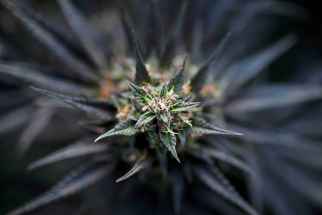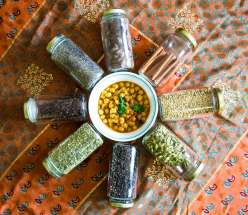Bonding in the kitchen Teacher shares her experience with food and information on Indian spices
Read this article for free:
or
Already have an account? Log in here »
To continue reading, please subscribe:
Monthly Digital Subscription
$0 for the first 4 weeks*
- Enjoy unlimited reading on winnipegfreepress.com
- Read the E-Edition, our digital replica newspaper
- Access News Break, our award-winning app
- Play interactive puzzles
*No charge for 4 weeks then price increases to the regular rate of $19.00 plus GST every four weeks. Offer available to new and qualified returning subscribers only. Cancel any time.
Monthly Digital Subscription
$4.75/week*
- Enjoy unlimited reading on winnipegfreepress.com
- Read the E-Edition, our digital replica newspaper
- Access News Break, our award-winning app
- Play interactive puzzles
*Billed as $19 plus GST every four weeks. Cancel any time.
To continue reading, please subscribe:
Add Free Press access to your Brandon Sun subscription for only an additional
$1 for the first 4 weeks*
*Your next subscription payment will increase by $1.00 and you will be charged $16.99 plus GST for four weeks. After four weeks, your payment will increase to $23.99 plus GST every four weeks.
Read unlimited articles for free today:
or
Already have an account? Log in here »
Hey there, time traveller!
This article was published 22/05/2018 (2757 days ago), so information in it may no longer be current.
Early this spring, I signed on for a workshop called “Mandalas and Meditation.”
It was taught by the multi-talented Nandita Selvanathan. She shared much of the spiritual background of the mandala and its use as a meditation tool. She was so informative and brought such caring to her presentation, that when she mentioned she also taught cooking, I wanted to learn her thoughts about food.
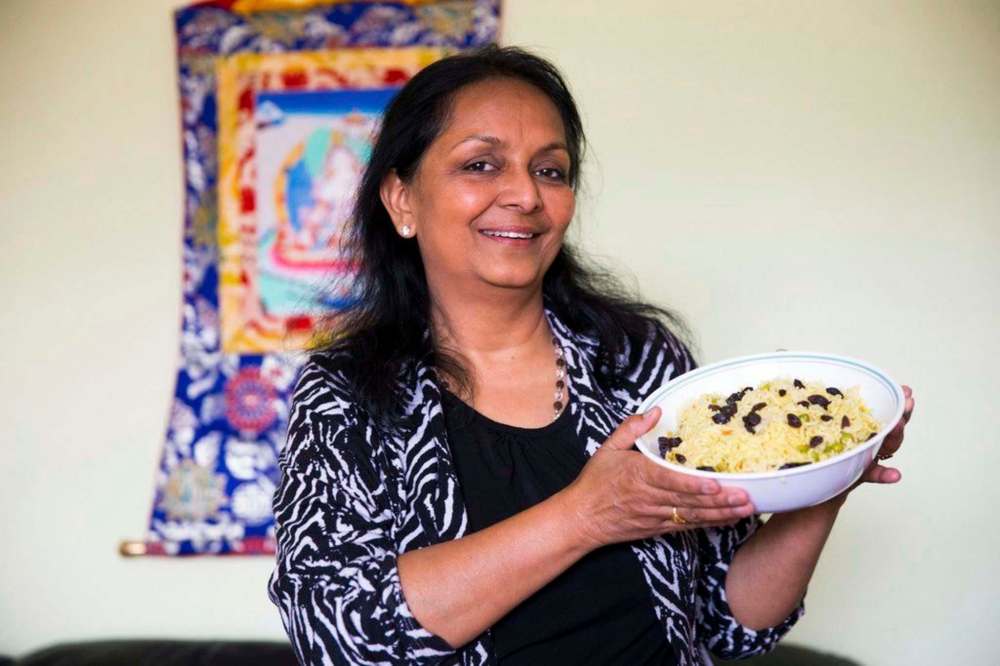
She is a remarkably accomplished person with a doctorate and post-doctorate in microbiology. She is a member of the Manitoba Storytellers Guild and is also a musician. She teaches cooking and other aspects of Indian culture, and offers travelogues in various community settings. Selvanathan is almost an embodiment — and certainly a gifted messenger — of her beloved Indian culture. She is a deeply spiritual person, evident in her conversation and her presentations.
Selvanathan was born in one of the oldest living cities in the world, Varanasi. It is an arts and cultural hub of India, situated on the banks of the River Ganges in the northern part of the country.
“I am privileged to be born and brought up there,” says Selvanathan.
“My parents were very good vocalists and my father also played sitar and in our house we learned about food, culture, music, and ancient Sanskrit chants.”
Selvanathan’s relationship with her mother (who held a masters degree in a time when less than four per cent of India was literate) was especially tight-knit.
“I learned to cook from my mother, who prepared meals from fresh food every day, twice a day, for family, friends and neighbours,” she says.
“My bonding with my mother was very strong, very special, and as a small child and a teenager, I always wanted to be with her.”
While she was working on her own degrees, Selvanathan would study at the dining table to be near her, and she would do the kitchen prep for her mother.
“That’s how I learned the basics,” she says.
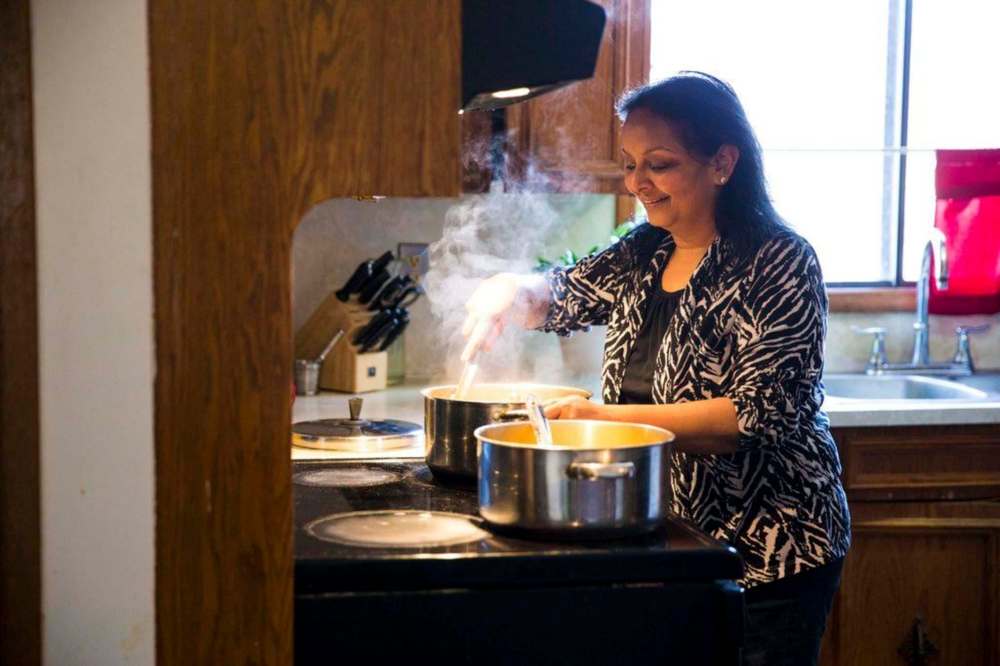
Selvanathan is a passionate proponent for home cooking. You may have heard the expressions “food is medicine,” and “food is love” — these are the foundations of Selvanathan’s kitchen philosophy.
“We look at the beautiful memories of our parents and our grandparents and food is very important, and at this age now, I always talk about which dish my mother prepared, how she prepared it, how frequently she prepared them, which ones my father liked — and these apparently insignificant details about food are part of my memories of my parents,” she says.
“You develop a bond with your family, and you learn their tastes.”
“You should always use fresh material because it is healthier for you and because we use the best ingredients for our loved ones.”
Selvanathan shared some information on a few of those ingredients, the all important spices that are the hallmark of Indian cooking.
It is good to remember that India is a vast place, and the way all ingredients are used varies by region. She also points out that India produces millions of tons of spices annually and research is ongoing to continue to preserve and develop heartier strains while respecting their heritage and purposes.
“These spices are there not only to satisfy our tastebuds, but they have many health-giving properties that people might not know about, and they should be used in balance,” she says.
“Ayurveda (Indian medicine) teaches that every spice has an after-effect once it has been digested and assimilated in the body.”

Here are some key spices to know:
Cumin is an essential part of plant-based cooking and can also be used in non-vegetarian curries. With a strong aroma, it can be used as a seed or in ground form. It aids digestion and proper assimilation of food and enhances appetite. Roasted cumin has a cooling effect.
Coriander is another crucial spice used whole or ground. Its green leaves are called cilantro. It is an aid to the digestive system, better used in combination with cumin and fennel seeds. Coriander can balance the doshas. (The three doshas — vata, pitta, and kapha — come from the five elements and are also known as mind-body types that uniquely combine in the human body. Ayurveda aims to create a dynamic state of balance between mind, body and environment.) It helps in detoxification. Some like to chew on whole coriander seed while eating curry. Cilantro leaves assist in removing toxins.
Cardamom seed can be green (more common in the west) or black. It promotes digestive health, is beneficial to blood-sugar levels, and can uplift the spirit or mood. Use it in vegetarian, non-vegetarian dishes, desserts and chai tea. It helps to stimulate metabolism, has anti-oxidant properties and helps maintain heart health, healthy cholesterol levels and helps control blood pressure.
Turmeric’s active ingredient is curcumin. It is best combined with pepperin (which is found in black pepper). It is used in almost every dish for both its flavour and for its medicinal value, which has been documented in ancient scriptures. It is anti-oxidant. Like all the spices, its efficacy arises from consuming small amounts on a regular basis. It is an anti-inflammatory, turmeric is especially helpful with coughs and colds.
It is central to much of Indian culture. For example, in northern India, brides and grooms are anointed with powdered turmeric, which is exchanged to signify the bonding of the families.
Labour-intensive saffron is the most expensive spice in the world. It’s produced in northern India from the pistils of a crocus. Used in desserts and non-vegetarian dishes, it is high in many anti-oxidants, vitamins A and C, folic acid, riboflavin and niacin. It can aid in recovery to optimum health after long illnesses and helps to maintain the immune system.

Selvanathan says it is not only the science, but the wisdom, handed down through generations, which is crucial in the use of these spices for health. She says ginger, black pepper, cinnamon, fennel seeds and others have many other benefits.
“To end, I would just say one shloka — and this is the one closest to my heart — Chapter IV, verse 24 from the Bhagavad-Gita, the sacred book of all the Hindus,” she says.
Here it is:
Brahmārpañam Brahma Havir Brahmāgnau Brahmañāhuta,
Brahmaiva Tena Gantavyam Brahmakarmā Samādhinah.
“The first two lines say that the act of offering is God; the offering here, food, is itself God; the digestive fire in our stomach is also a manifestation of God; the person who is offering also is God, the Supreme Being,” she says.
“When I’m offering food to somebody, it is a manifestation of the Supreme Being and when we keep this end in mind and we act that way, that is the way to reach the Supreme Being to attain Moksha (release from the cycle of re-birth),” she says.
Selvanathan offers readers three recipes below. She is offering classes on Saturday, June 2, at 1:30 p.m. at Sergeant Tommy Prince Place (formerly the North Centennial Recreation Centre). Find more information and classes on her website, www.learnwithnancy.com.
Basmati Pulao
Servings: 5. Preparation time: 45 minutes.
Ingredients:
250 ml (1 cup) Basmati rice
1/2 small onion, finely chopped 1 clove of garlic, finely chopped or grated
2 ml (1/2 tsp) ginger, grated
1/2 medium tomato, chopped
30 ml (2 tbsp) of cooking oil
125 ml (1/2 cup) raisins, optional
1 big bay leaf
2 ml (1/2 tsp) of cumin seeds
1 green cardamom, crushed
1 cm (1/2 inch) cinnamon stick, crushed
1 clove garlic, crushed
2 ml (1/2 tsp) of salt or as per taste
1 ml (1/4 tsp) of turmeric
1 ml (1/4 tsp) of black pepper powder
1 ml (1/4 tsp) of red chili powder or as per taste

Warm up cooking oil in a thick bottom pan. Add cumin seeds to the warm oil. Fry until golden brown. Add bay leaves.
Add chopped onion, ginger and garlic. Fry until onions are golden brown.
Add salt, turmeric, chili powder, black pepper powder and chopped tomatoes. Fry for approximately 5 minutes.
Add crushed cardamom, cinnamon, and cloves.
Add rice. Add 625 ml (2 1/2 cups) of water.
Cook rice in a rice cooker.
Add raisins to the freshly cooked rice. Serve Basmati Pulao with lentil soup or Chana Masala
Lentil (Mung Bean) Soup
Lentils and mung beans are in the same plant family, but mung beans are larger.
Servings: 5. Preparation time: 45 minutes.
Ingredients:
250 ml (1 cup) moong (mung) beans or yellow beans
1 medium tomato
5 ml (1 tsp) ginger, grated
5 ml (1 tsp) garlic, grated
30 ml (2 tbsp) cooking oil
5 ml (1 tsp) cumin seeds
1 ml (1/4 tsp) turmeric powder
5 ml (1 tsp) salt or as per taste
5 ml (1 tsp) red chili powder or as per taste
5 ml (1 tsp) fresh cilantro (finely chopped) or kasoori methi (dried fenugreek leaves)
750 ml (3 cups) water
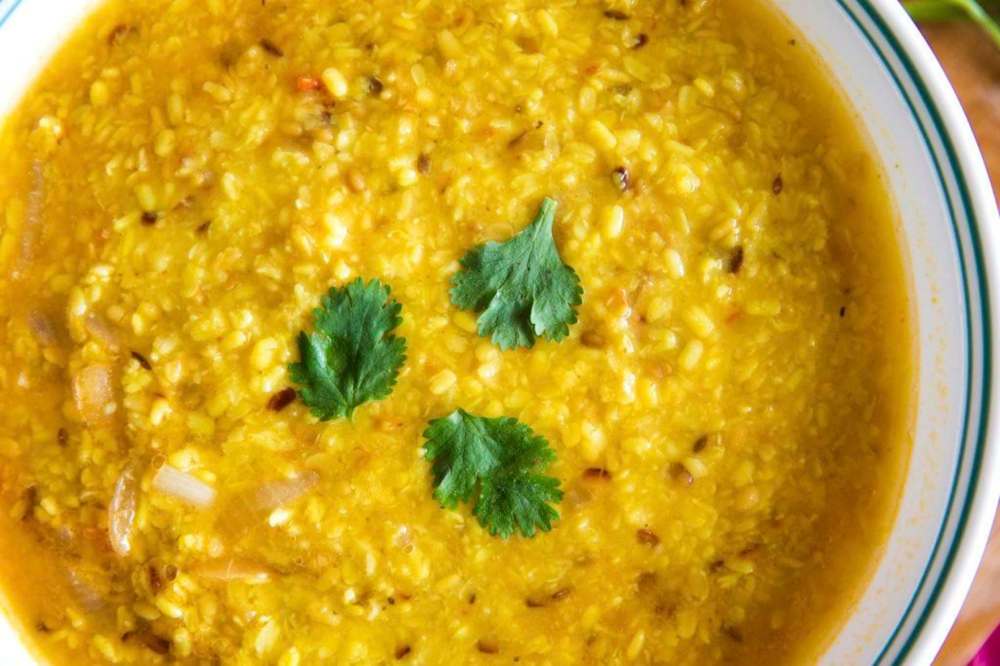
Warm a thick bottomed pan. Roast moong bean until nutty aroma comes and grains become slightly brown. Add 750 ml (3 cups) of water.
Add salt, turmeric and red chili powder.
Cook moong bean until it becomes soft.
To sauté the lentil soup:
Heat cooking oil in a thick bottomed pan. Add cumin seeds to warm oil, cook until these turn slightly brown.
Add finely chopped tomatoes, garlic and ginger and cook until tomatoes turn soft.
Add this mixture to cooked moong bean and mix well.
Add fresh cilantro or kasoori methi.
Cook for about 4 to 5 minutes and turn off the flame.
Serve lentil soup with roti or Basmati Pulao.
Chana Masala or Chickpeas
Servings: 8. Preparation time: 45 minutes.
Ingredients
325 ml (1 1/2 cups) dry chickpeas
60 ml (1/4 cup) cooking oil 1 medium onion, finely chopped
2 cloves of garlic, grated
5 ml (1 tsp) ginger, grated
2 tomatoes (medium size), finely chopped 10 strands cilantro, finely chopped
5 ml (1 tsp) cumin seeds
2 ml (1/2 tsp) of salt or as per taste
2 ml (1/2 tsp) turmeric
5 ml (1 tsp) red chili powder or as per taste
5 ml (1 tsp) black pepper
3 bay leaves
3 green cardamoms, crushed
2 cloves (crushed)
2.5 cm (1 in) cinnamon stick, crushed
10 ml (2 tsp) chunky Chaat Masala (Chaat Masala is a spice powder mix or masala, can be store-bought)

Soak the chickpeas overnight and boil them until they are tender.
After soaking and boiling the chickpeas, their volume doubles.
Warm up cooking oil in a big thick bottom vessel.
Add cumin seeds and fry until dark brown.
Add bay leaves and finely chopped onions.
Fry on medium heat until onion pieces become light brown.
Add grated garlic, ginger, salt, turmeric, chili powder, black pepper, crushed cardamom, cinnamon and cloves.
Add the finely chopped tomatoes and fry until tomatoes become pulpy.
Add chunky Chaat Masala.
Add the boiled chickpeas and mix well.
Add water if need be, bring to boil and simmer for 15 min.
Add finely chopped cilantro. Serve Chana Masala or chickpeas with Basmati Pulao.
Twitter: @WendyKinginWpg



